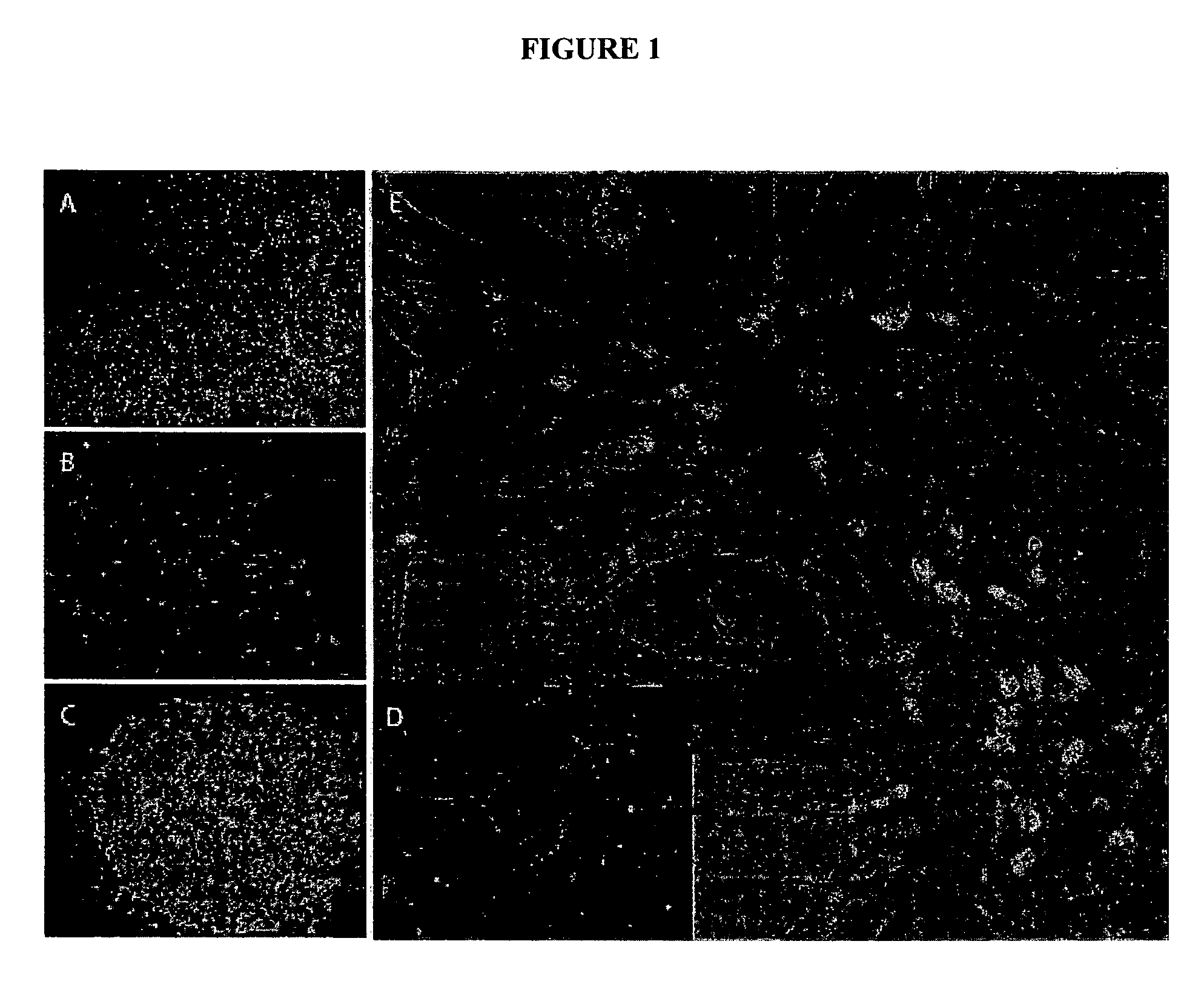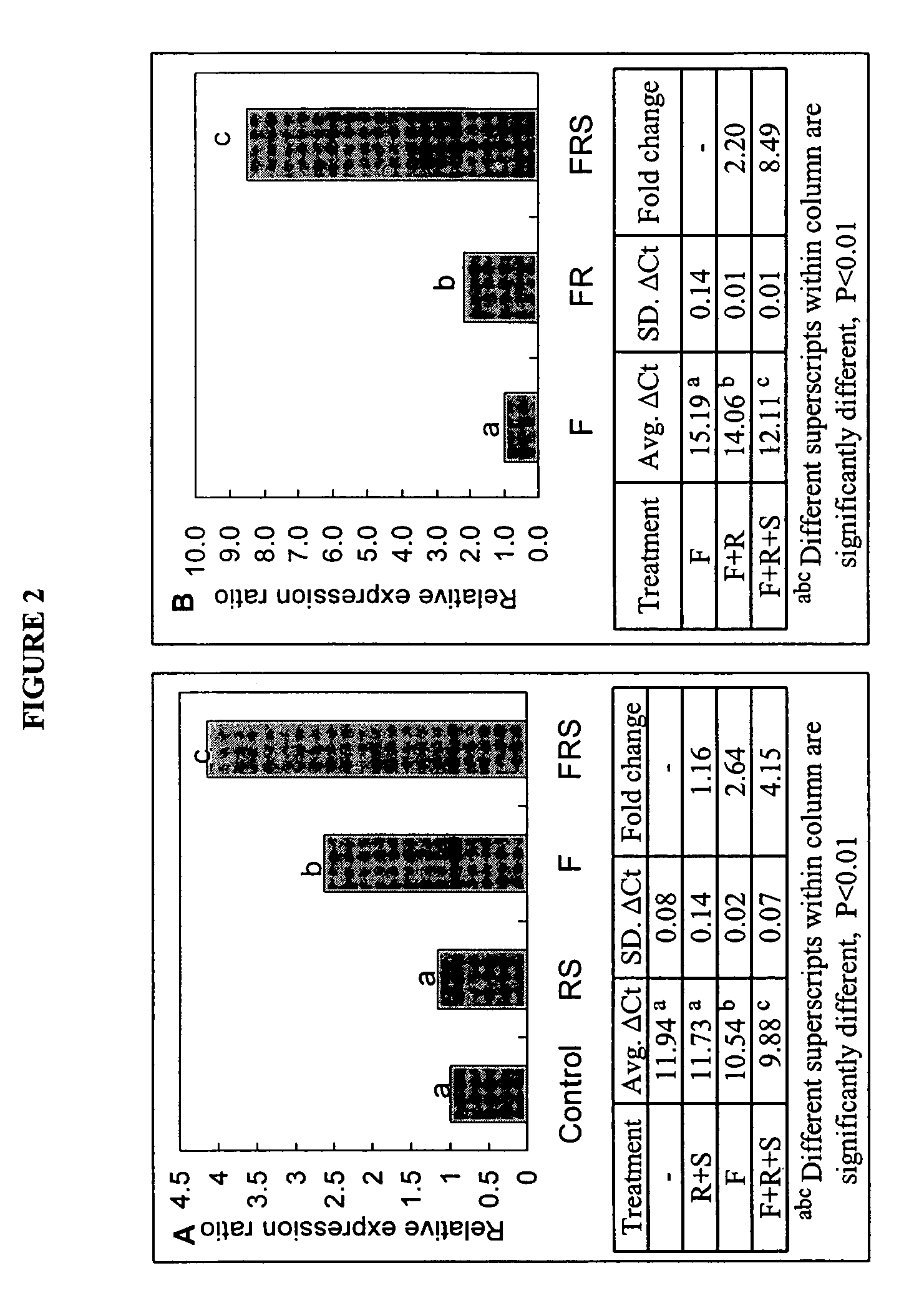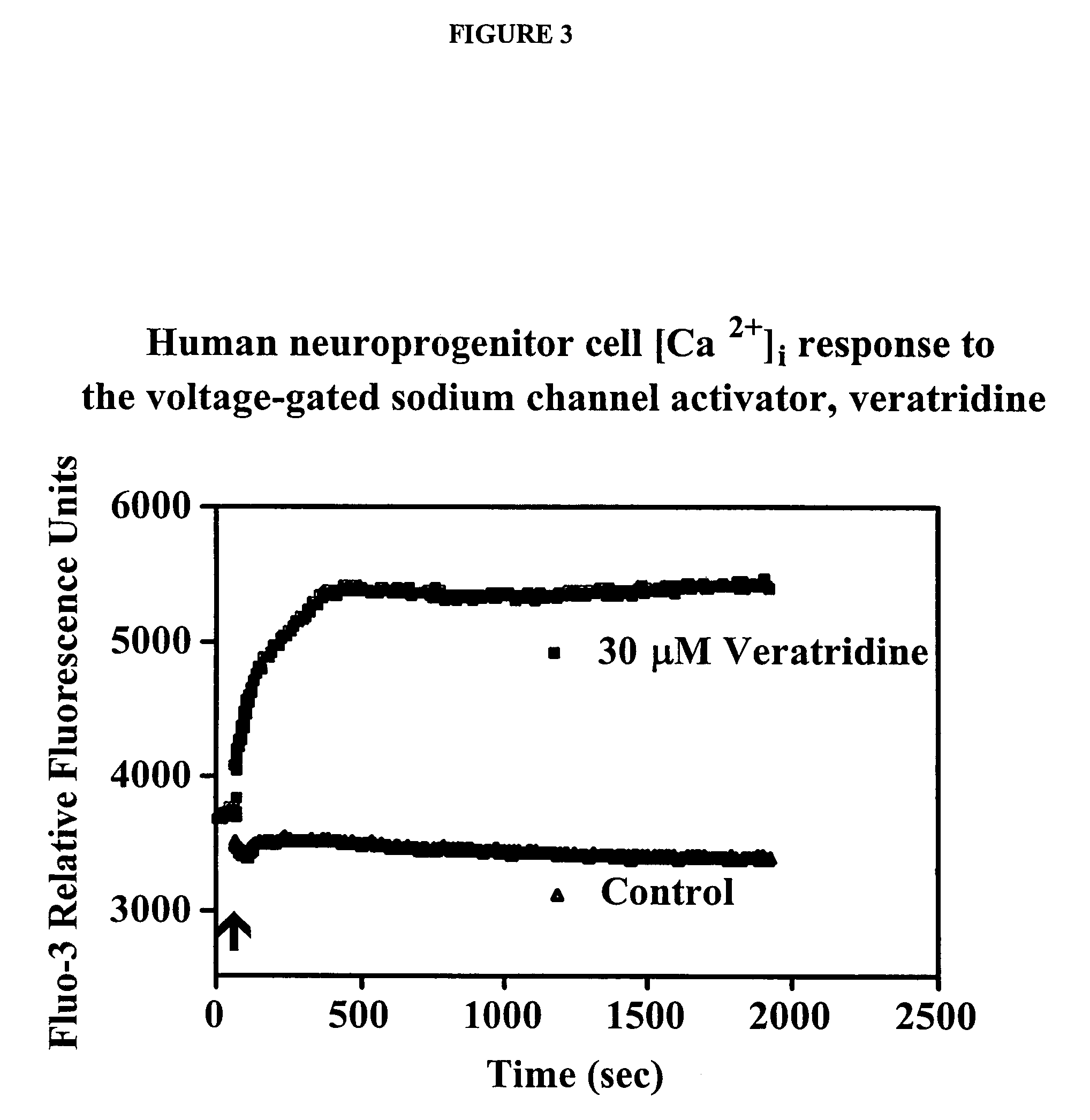Neuronal progenitors from feeder-free human embryonic stem cell culture
a technology of human embryonic stem cells and neuroprogenitors, which is applied in the field of producing feeder cellfree neuroprogenitors, can solve the problems of undesired cell types, such as left over es cells, and a major hindrance to diagnostic and clinical applications, and achieves the effects of reducing the number of es cells
- Summary
- Abstract
- Description
- Claims
- Application Information
AI Technical Summary
Benefits of technology
Problems solved by technology
Method used
Image
Examples
examples
Simple and Scalable Method of Producing Primate (Including Human) Neuroprogenitor Cells
Methods
Cell Culture
[0108]Rhesus ES cells were routinely cultured in DMEM / F12 base medium (Gibco) supplemented with 20% Knockout Serum Replacement (Gibco), 2 mM L-glutamine (Gibco), 0.1 mM Non-essential Amino Acids (Gibco), 50 units / ml penicillin / 50 ug / ml streptomycin (Gibco), 4 ng / ml bFGF (Sigma-Aldrich), and 0.1 mM β-mercaptoethanol (Sigma-Aldrich). Cells were passaged every 3-4 days using 0.05% trypsin-EDTA (Gibco). Cells were cultured on inactivated mouse embryonic fibroblasts (MEFs) plated 3 or more days prior to use.
[0109]Neuroprogenitor cells were cultured in DMEM / F12 supplemented with 2 mM L-glutamine, 50 units / ml penicillin / 50 ug / ml streptomycin, 20 ng / ml bFGF, and 1×N2 supplement (Gibco). 1×N2 supplement is composed of human transferrin (100 ug / ml), bovine insulin (5 ug / ml), progesterone (6.3 ng / ml), putrescine (16.11 ug / ml), and selenite (5.2 ng / ml). These cells were passaged every 5-7 d...
example
Human Motor Neuron Differentiation Using Human Embryonic Stem Cells
Method
[0159]NIH approved HESC (BG01) were first committed to a neuroprogenitor cells (als, neuro epithelial cell (NEP) phenotype (FIG. 1A). These cells are self-renewing and can give rise to all the cells that comprise the mammalian central nervous system, including various types of neurons and glial cells. See, Zhang, et al., Nat. Biotechnol., 19(12), 1129-33 (2001). We have cultured NEP for 10 months in neurobasal medium supplemented with B27 (1×), LIF (10 ng / ml) and bFGF (20 ng / ml) in serum free medium without overt changes in expression of Nestin, Musashil or SOX 1, 2, and 3, or in differentiation potential to neuron and glial phenotypes. Importantly, these cultured adherent human NEP cells lose expression of OCT4 (FIG. 1B, 1C). Retinoic acid (RA) and sonic hedgehog (Shh) are well known molecules involved in motor neuron differentiation. When mouse embryonic stem cells were induced to neural fate and exposed to S...
PUM
| Property | Measurement | Unit |
|---|---|---|
| time | aaaaa | aaaaa |
| time | aaaaa | aaaaa |
| length of time | aaaaa | aaaaa |
Abstract
Description
Claims
Application Information
 Login to View More
Login to View More - R&D
- Intellectual Property
- Life Sciences
- Materials
- Tech Scout
- Unparalleled Data Quality
- Higher Quality Content
- 60% Fewer Hallucinations
Browse by: Latest US Patents, China's latest patents, Technical Efficacy Thesaurus, Application Domain, Technology Topic, Popular Technical Reports.
© 2025 PatSnap. All rights reserved.Legal|Privacy policy|Modern Slavery Act Transparency Statement|Sitemap|About US| Contact US: help@patsnap.com



